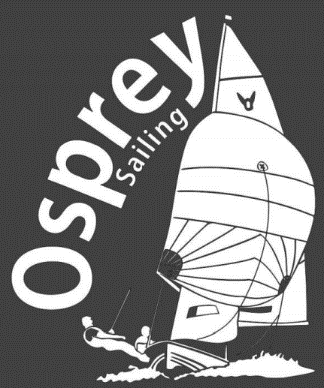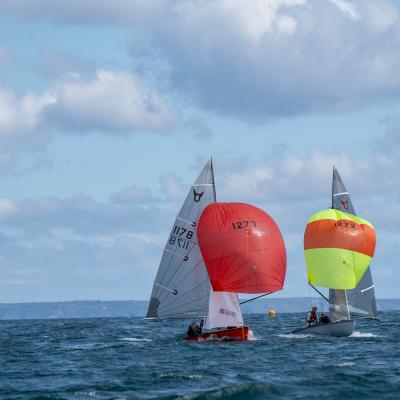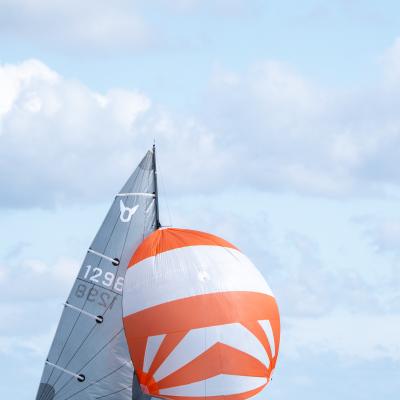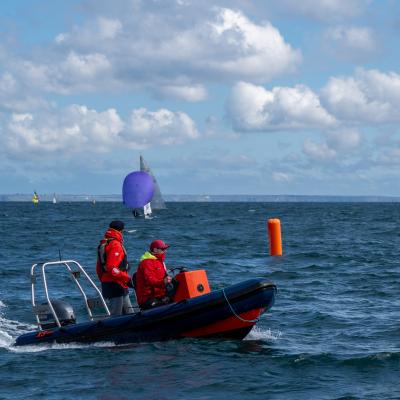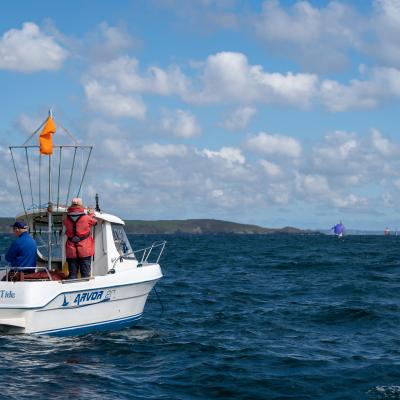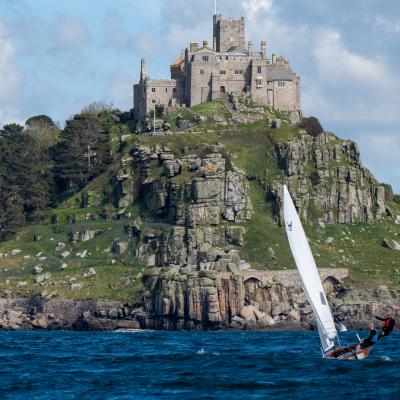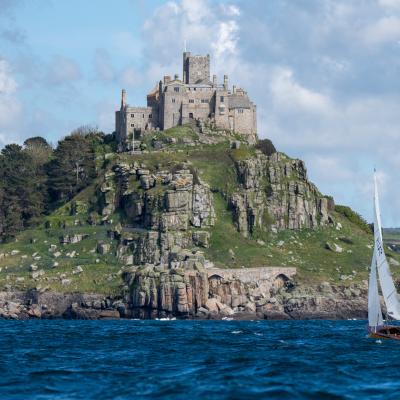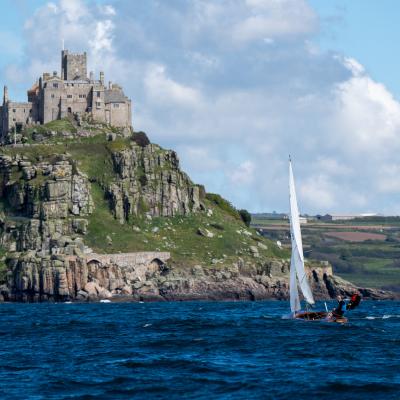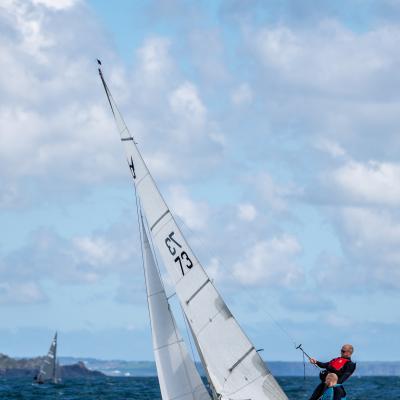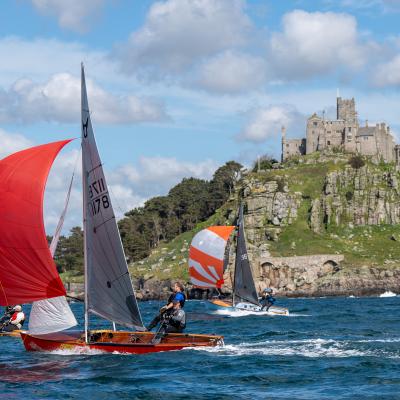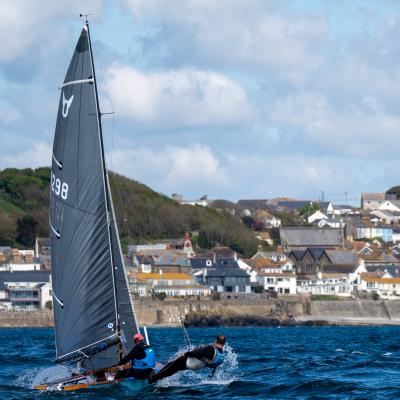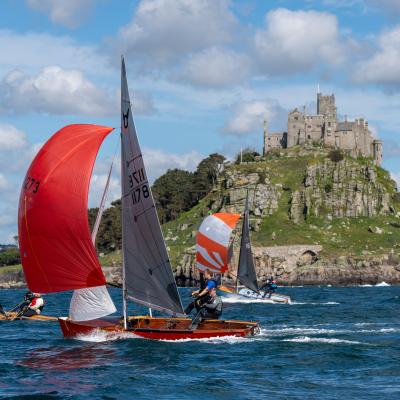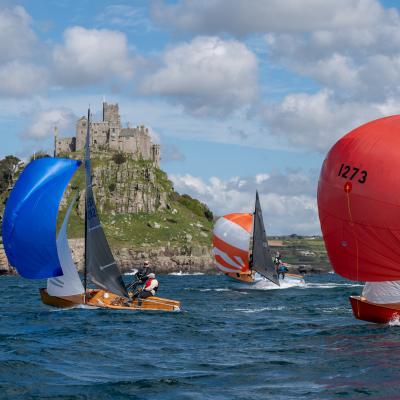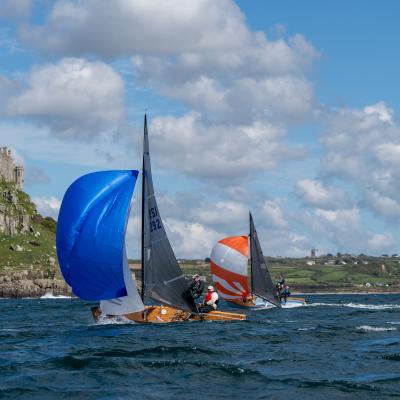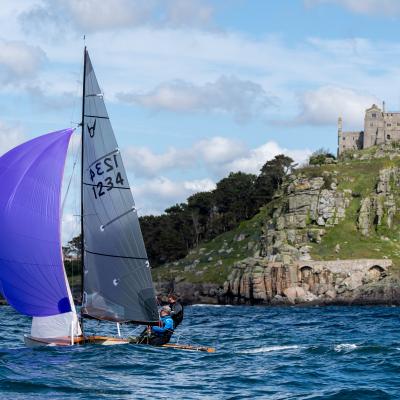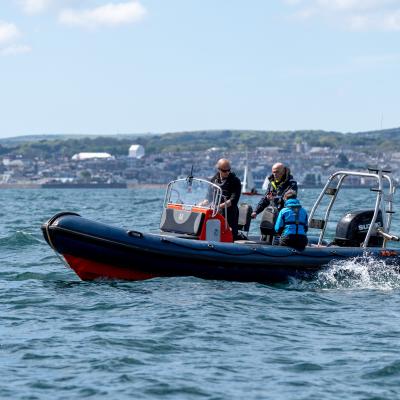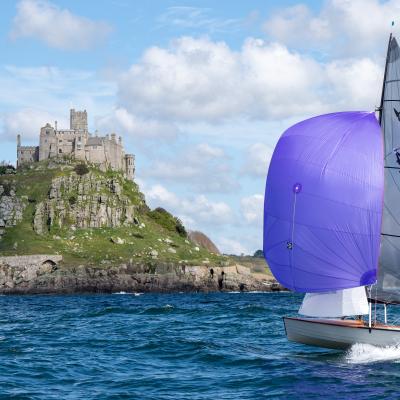About Boat
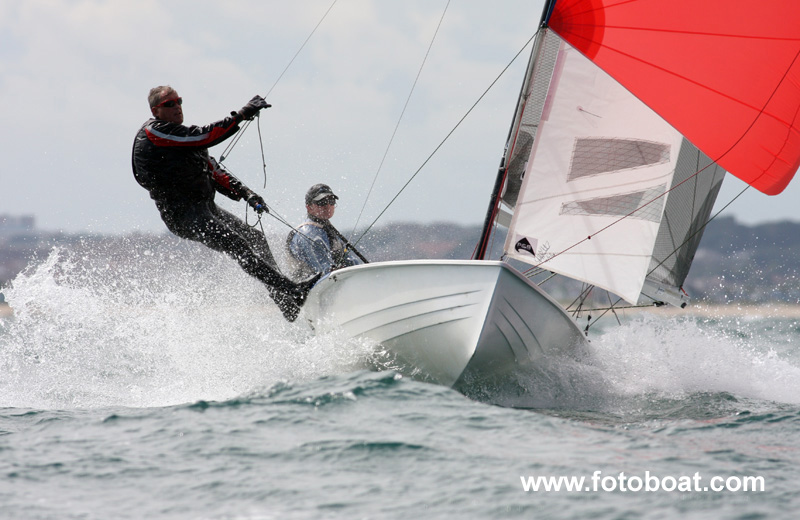 The Osprey is a big, fast sailing dinghy with a single trapeze and a symmetric spinnaker.
The Osprey is a big, fast sailing dinghy with a single trapeze and a symmetric spinnaker.
Designed by Ian Proctor, the Osprey is sailable in all but the most extreme weather conditions, whether inland reservoir, tidal rivers or mountainous seas.
The Osprey is a well behaved and balanced boat, suitable for racing or cruising, and may be sailed by a crew of two or three. She comes with a spacious interior, giving a generous space to its crew. A choice of hull materials, fittings and layout, rig and sails allow competitive pricing.
Over the years, there has been some development in hull shape and construction, and carbon masts, booms and spinnaker poles are now allowed. Nonetheless, it is the ethos of the class that the hull shape and sail plan remain true to the designer’s original concept.
The class’s policy of gradual development means that old boats still compete successfully at the top end of the fleet against modern examples. This is a very rare attribute in other classes, so it is no wonder that many sailors enjoy the challenge of finding and preparing an old wooden example to compete with the best. Others prefer to purchase a modern example by builders Hartley Boats, with a more standard layout, needing little pimping or tuning to be competitive.
Many Ospreys are sailed by couples, and the introduction of carbon rigs mean that the class now suits lighter weight pairings as well as heavy weight teams.
It is a boat which is quick on all waters and all winds, while in heavy winds and big seas, it is a boat which really looks after you.
Osprey's do not become obsolete
- Why Sail
- Boat History
- How to Get One
- Racing Circuits
- Specification
- Measurement
- Oh Such A Perfect Day
The Osprey is a fast, exciting boat to sail. The Osprey relies on the traditional values of boat design to achieve its speed. The Osprey is fast upwind and down, whereas many competitor boats are heavily optimised to favour downwind sailing at the expense of upwind.
The Osprey’s 17 foot 6 inch (5.34 metre) length gives it a longer waterline length than almost any dinghy class, and hence a higher maximum speed in displacement mode. Upwind performance is reinforced by the Osprey’s large over-lapping Genoa, whereas off-wind speed is generated by the large spinnaker emerging from the ‘chute.
Downwind, the helm and crew can choose their angles to the wind, and the boat is equally at home running straight before the wind, or heating up on broad reaches. Its character is quite different to asymmetric classes, which always have to zigzag downwind to generate boat speed. In the Osprey, you choose your angle according to the wind strength and tactical considerations, making the downwind legs much more interesting. And of course it handles three sail reaches with aplomb.
In many classes, good helms and crews can find themselves off the pace through being either too heavy or light.
The Osprey class has a breadth of crew weights which other classes cannot match. Larger crews may use stiff alloy spars, or may straighten their carbon masts, while lighter crews usually opt for carbon spars, using more mast bend. Either way, combinations at either end of the weight range can be very competitive. Most Ospreys come with fully adjustable rigs, with rake, shrouds and mast strut all adjustable on the water.
The Osprey is a big boat, hence a bit heavier than smaller competitors, and it has great natural stability. It is a perfect boat on which to learn to trapeze, and it is a fulfilling boat to crew, with a generous spinnaker to enjoy. The Osprey can easily carry a crew of three, though is raced by pairs. It is also a great boat for long distance races or for cruising.Osprey- the perfect all rounder!
The Osprey design was originally penned by Ian Proctor in the early 1950’s. It was designed for the Olympic Selection Trials along with several others; two of which became the Flying Dutchman and 505 of today.
Ospreys in the early days often raced with a crew of three, although with introduction of the trapeze, the optimum racing crew became two. The class still allow 2 or 3 on board whilst racing, but only one on trapeze.
The original design built in so much strength and longevity that this has influenced much in the development of the class. Old boats don’t fade away, but remain competitive for decades.
There have only been three major hull developments, which took place in 1973, 2002 and 2005. In 1973 the Mk III was designed. This removed the rear buoyancy tank; the hull shape being kept the same. The principal reason behind this was to enable a good quality glass reinforced plastic (GRP) boat to be built. The original intention was achieved, as the Mk III hull was no faster or lighter, just different.
In 2002 a change to the measurement rules allowed owners to have a half-height front buoyancy tank if they wished.
In 2005 the new Mark IV FRP boat arrived. The rework of the design was undertaken by Phil Morrison, with new moulds built by Ian Teasdale and Kevin Driver, and boats built by the new sole builder, Hartley Boats. The major changes were:-
- Addition of a mini buoyancy tank at the stern to stiffen the whole transom
- moving the main thwart aft to give more space for the crew
- redesigned forward bulkhead a la standard GRP 505
In 2016, the new Osprey Mark V arrived, for the first time of epoxy construction. Internal design is different to the Mark IV, but the external hull shape is unchanged. Hartley Boats remain the sole builder. A further revamp of the cnstruction and internal layout took place in 2021 with the development of the MkVI. The MkVI has been generally available since 2022.
The shape and weight of the Osprey hull is strictly controlled. The rig controls are open, and spars may be carbon or alloy. There is choice of sailmaker while spars come from either of two manufacturers.
The Osprey class includes a wide variety of wooden, GRP and a few composite boats, all competing on level terms with the recent FRP ones.
In some classes, it seems that each year’s latest new feature must be bought to keep your boat competitive. Not so in the Osprey, where development is strictly controlled, so it is neither necessary nor possible to buy your way to the front of the fleet.
But watch out …
In the Osprey class you may be beaten by a boat that is older than you are!
To buy a new Osprey, contact the sole builder, Hartley Boats on 01332-369751, www.hartleyboats.com
Since 2005, all boats have been built by Hartley Boats. Boats produced from 2005 to 2015 are called Mark IVs, whilst those between 2016 and 2021 are Mark Vs and the latest available from 2022 are MkVI.
Second hand boats are available in wood, composite (GRP/FRP hull and wood decks), GRP or FRP.
Best sources for finding second hand boats for sale are:-
- This web site in the For Sale section
- The Class Secretary, who may know of boats available that are not yet listed anywhere
- Boats for sale websites such as www.apolloduck.co.uk and Facebook Dinghies and Dinghy Bits for Sale [https://www.facebook.com/groups/dinghies/]
- Hartley Boats occasionally have trade in boats for sale
For more info browse this site, or the gossip forum within it, or try our Facebook pages, called Osprey and Sail Osprey.
Have you tried sailing an Osprey? If you’d like to find out more, or to arrange a test sail contact Hartley Boats, or speak to the Osprey fleet captain at the club nearest to you. Or contact any committee member.
We hope to meet you soon - it is a very friendly class.
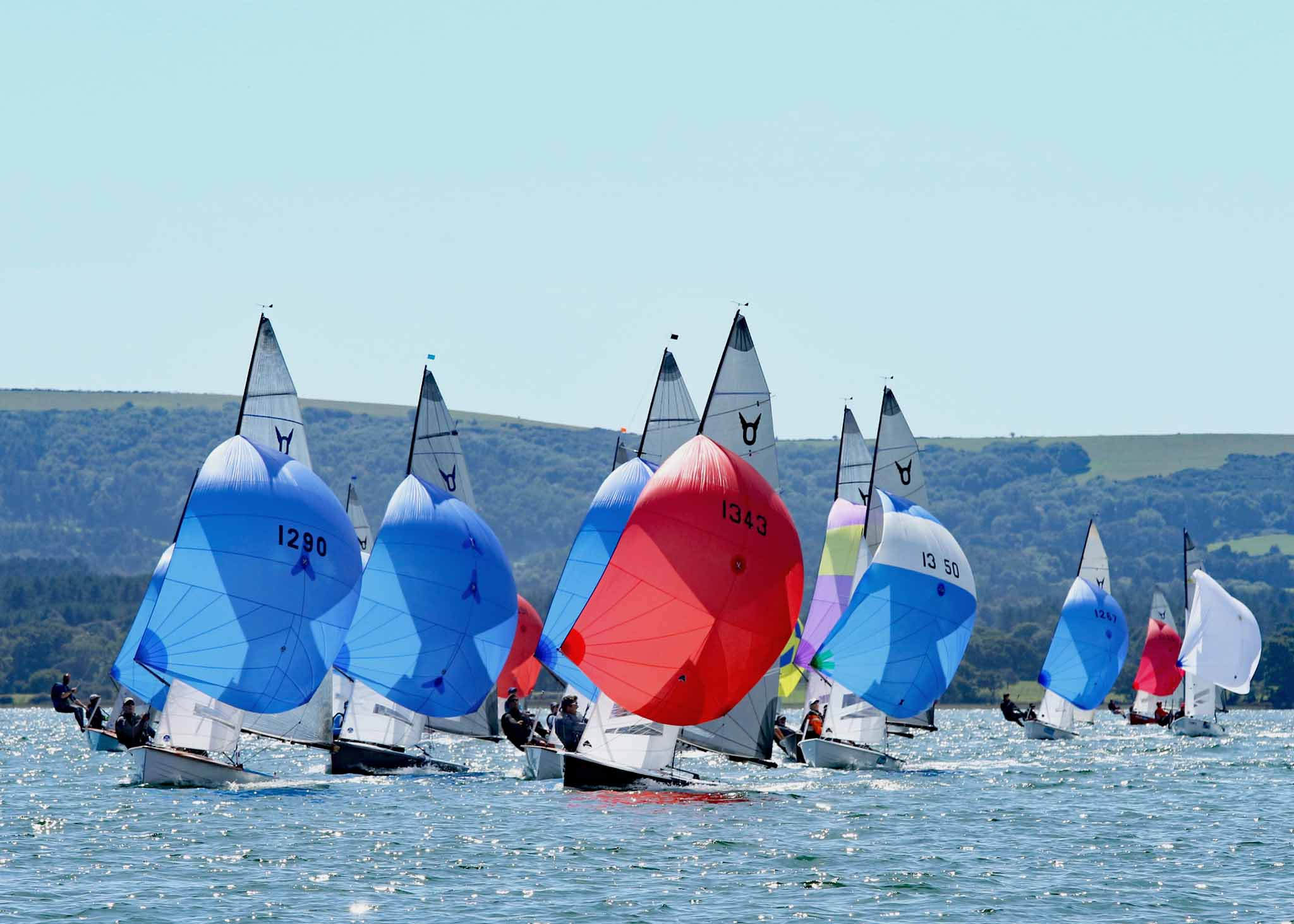 You can enjoy handicap racing in your Osprey at your club, but the best form of racing is against other Ospreys. These are your opportunity to meet fellow Osprey enthusiasts.
You can enjoy handicap racing in your Osprey at your club, but the best form of racing is against other Ospreys. These are your opportunity to meet fellow Osprey enthusiasts.
Therefore your Class Association organises a wide variety of racing opportunities for the class.
At the top are the Osprey Championships. The National Championships are the class’s blue riband event, held in July, August or September every year. In both 2013 and 2014, the Nationals attracted a bumper forty boat fleet, so this is the event you really must not miss. There are also major Championships available at the beginning and end of each season. The Inlands is usually held in April, and the End of Seasons in November.
Next there are three Regional Championships, the Welsh & Midlands, the Southerns, and the Scottish & Northerns.
Spread through the whole season is the Nationwide travellers series, the Wilkinson Sword (WS) series. This series takes in up to a dozen events across the country from the SW to the North of England.
To give Osprey sailors the chance to sail a series closer to home, we also organise a number of Regional circuits, currently in the Lakes & Borders, South Wales, and Southern areas.
See Events Calendar section of this website for latest list of events and dates.
Look out for dates of FREE class coaching days.
Racing against other Ospreys is the best way to make progress and pick up tips from your fellows in a friendly class.
So Come and Join us!
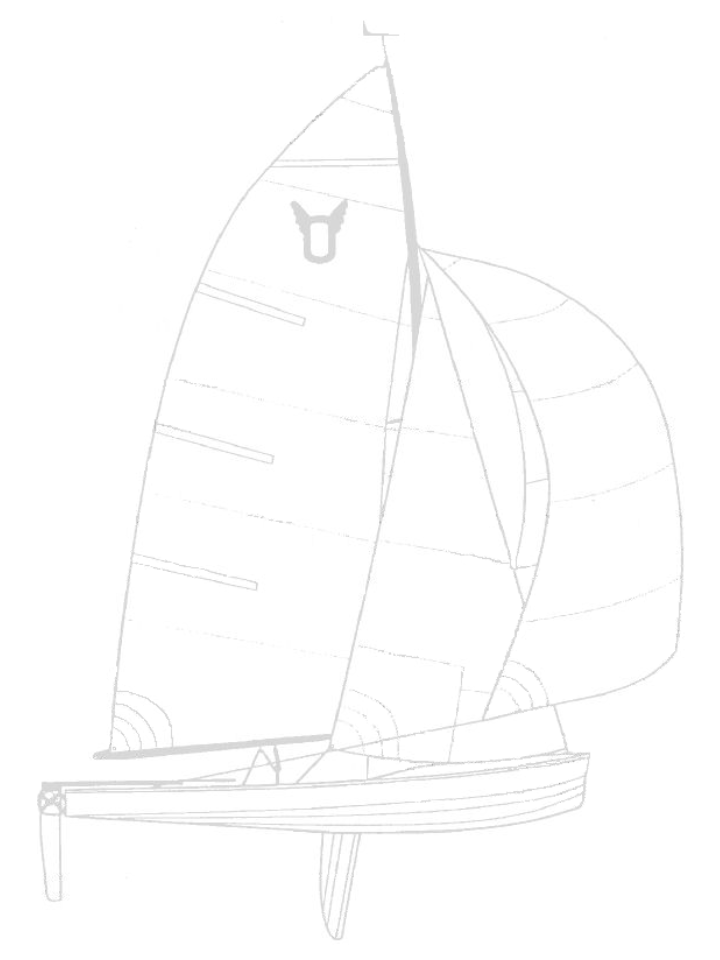
The Osprey is a fast racing boat with symmetric spinnaker and single trapeze
| Metric | Imperial | |
| Overall Length | 5.35 m | 17ft 6ins |
| Overall Beam | 1.75 m | 5ft 9ins |
| Minimum weight | 134 kgs | 295 lbs |
| Crew for racing | 2 or 3 | |
| Trapeze | 1 | |
| Main sail | 9.29 sq m | 100 sq ft |
| Genoa | 4.64 sq m | 50 sq ft |
| Spinnaker | 17.2 sq m | 185 sq ft |
| Crew weight range | 120-210kg | |
| Mast | Aluminium or Carbon Fibre | |
| Boom | Aluminium or Carbon Fibre | |
| Spinnaker pole | Aluminium or Carbon Fibre | |
| RYA PN | 941 | |
| Designer | Ian Proctor | |
| Year designed | 1952 | |
The Osprey was originally built in wood but is available in GRP (glass-fibre reinforced plastic as well) since the mid-1960's. There are also a few composite versions around with GRP hull and wooden decks.
 took over production in 2005, introducing the GRP/ FRP Mark IV. In 2016 Hartley introduced the latest version, the Mark V, using epoxy for the first time.
took over production in 2005, introducing the GRP/ FRP Mark IV. In 2016 Hartley introduced the latest version, the Mark V, using epoxy for the first time.
Contact sole supplier Hartley Boats Ltd or telephone 01332 369751.
More information on the class can be obtained from the Osprey Class Secretary, via email secretary@ospreysailing.org.uk.
 On change of ownership a new measurement certificate must be obtained. A new certificate can be obtained from the class secretary [secretary@ospreysailing.org.uk]. Please if possible send a copy of the existing certificate with your request for a new one.
On change of ownership a new measurement certificate must be obtained. A new certificate can be obtained from the class secretary [secretary@ospreysailing.org.uk]. Please if possible send a copy of the existing certificate with your request for a new one.
To legally race each boat must have a valid certificate.
Please note that the responsibility for the Osprey Class Measurement Rules passed to the Osprey Class Association and the new Copyright holder from the RYA in November 2005. Additionally the responsibility for having new boats measured and existing boats re-measured, as necessary, passed to the Osprey Class Association.
Owners planning to make changes to their boats in light of rule changes are reminded that it is their responsibility to ensure any changes they make, comply with the official Osprey Class Measurement Rules. So if you are planning work on your boat please check with the Technical Officer that what you have in mind will be within the Class Measurement Rules.
The copy of the Osprey Class Measurement Rules published by the Osprey Class Association and the Copyright Holder is now available.
-
The last RYA copy of the Osprey Class Measurement Rules, published in 2004, is available by request.
contributed by Adam Bowers, RellingOne Design Sails in November 2004
(note Relling are now part of North Sails)
There are lots of words here but at least they're all short!
You never know you may learn something! One of the great things about Osprey sailing is the flexibility and diversity of the rig. The direct upshot of this is the marvellous mix of people involved in sailing the boat. This short article is an attempt to explain some of the fundamental objectives in rig tuning to allow you and your Osprey to maximise your potential.
Let us take for example two fictitious crews ( for crews read helm and crew), one combination weigh in at 27 stone and the other weigh in at 21 stone. The obvious conclusion here is that the big boys will perform spectacularly in a breeze, while the lighties will sniddle to great effect in a drifter. Wouldn't life be dull if this were the case, and the fact is we've all seen fat blokes win races in the light and many is the time a heavy weather race has been taken by weight challenged teams. OK so how can this be?
At this point I would like to introduce you to a hypothetical cut off point, and we'll call it "20 units". This is the point where any boat is at maximum power, on an Osprey this is when the crew is fully extended on the trapeze with the mainsheet just about to be released from it's average upwind position. Now it goes without saying that 20 units for the big boys comes in more wind than it does for the lightweights, but the thing to remember is that it comes to all of us at some stage , the game is to achieve 20 units before your opponent and control the release of extra units once you've got there.
Now here's the rub. 20 units is the maximum we can deal with, less than 20 units and we're sailing below our potential , more than 20 units and we're struggling to maintain control against increasing drag and heel.
Time to go out for a sail on the perfect day.
The morning is bright and beautiful , but sadly there is very little wind as we push off from the dock. Aha we say to ourselves light airs what do we need to do here.
Fundamental: The wind must come into the rig , flow over the rig , and exhaust from the rig.
Stage two: power is generated by turning the wind away from it's original course by the rig.
Stage three: power is released by not turning the wind away from it's original course by the rig.
Now here we are faced with a very weak wind, which doesn't have sufficient strength to get over big curves and would stall before reaching the leech. We can't make the wind any stronger, but we can reduce the curve in the sail dramatically by pre-bending the mast, pulling on the out haul to the max, and opening up the sheeting angle on the Genoa. Mast rake has a powerful influence in all conditions and if it is too far upright it will create very big curves in the sails which we don't want in this light zephyr, so rake back to your moderate wind settings for now. Use your deck level mast control, be it a strut mighty screw chocks or whatever to bend your mast forward (pre-bend). By flattening the sails we have made it easier for the sluggish wind to travel across the sails and with careful trimming will be able to satisfy the fundamental.
Tell tales give us a very accurate guide to wind flow over the rig, if their not flying wind isn't going passed them, if they are flying wind is, yes it's as simple as that, and in these very light airs we need to see as much activity as possible in the upper mainsail and Genoa leech telltales. Sails must be trimmed very gently in these conditions so as not to disturb the incredibly sensitive and delicate breeze which is timidly blowing around your rig.
As the sun heats up this perfect day a slight wind develops increasing the hypothetical power available to 10 units. The tell tales stream merrily in the maturing breeze, and as the breeze builds it forces both main and Genoa leeches to open under increasing pressure. Now here's where we get to be a little sneaky,
Stage two of the fundamental states :- power is generated by turning the wind away from it's original course by the rig, and now that the wind is strong enough to push the leeches open we can straighten the mast, go to our upright position, sheet both sails in a little harder and create a slightly deeper curve hence turning the breeze even further.
How do we know when we've overcooked it, simple we look at the upper leech tell tales and keep loading the main or jib sheet until the relevant tell tale starts to dance. A dancing tell tale shows us that the air flow is getting to the back of the rig (by flying the tell tale ) but is on the verge of a stall (thereby collapsing the tell tale), correspondingly this amount of activity shows that the wind flow is just about accepting the amount of curve that we're asking it to follow. Any more sheet tension will result in the tell tale hanging down showing us that the wind is no longer passing it and subsequently the sail is stalled, if the tell tales are flowing consistently they are indicating that we can pull the sheets on a little stronger.
This intermittent period of light medium up to medium wind strength is the most difficult to get right, it takes constant attention and continuous adjustment to keep the sails working at their full potential and get as near to 20 units as they can.
As the day continues to warm the breeze continues to build, until we get to a stage where the wind is approaching 20 units The crew is now comfortably out on the wire the boat feels good, all the tell tales on main and jib are flowing and as the gusts increase we may well have to ease the mainsail to relieve the power. This is good, we have achieved the 20 unit level and hopefully we have achieved it before our competitors giving us the edge we need to win races, moving fast and pointing high.
Now we must consider how to get rid of any unwanted power, remember we can only deal with 20 units, and this is where the kicking strap starts to play it's part. We have just spent great effort getting the mainsail to perform correctly through mainsheet tension, now what happens if a gust comes and we have to release the mainsheet? All that effort will be wasted as the boom travels skyward and the mainsail leech opens dramatically, losing lots of power and dumping an unsuspecting crew in the water. The natural reaction now is to sheet in again ,this closes the leech, bringing the power back on and the crew is catapulted back up through the air again.
You can break this cycle of events by pulling the kicking strap on enough to take up any slack so that when the mainsheet is eased the boom travels horizontally and retains the leech profile you have spent so long achieving. This gives us far greater control of the power available to us, and now when a gust comes and we wish to ease just a tiny bit of power, we can do. A point to remember when using excessive mainsheet loads and or kicker loads, the mast will be forced to bend fore and aft unless controlled by spreader and deck controls, so make sure that these systems work properly.
All of a sudden God decides to chuck 25 units at us and the boat gets knocked all over the place. With the mainsail backing the jib flogging and the boat over on it's ear progress to windward is slow noisy and uncomfortable. Are we down hearted? No, we know that we can only deal with 20 units and all we have to do is release 5 units from the rig and all will be well. So what do we do? If we had a raking rig now would be a good time to drop it back a little by releasing a bit of jib halyard and pulling on the shrouds to maintain rig tension.
Be careful here, raking is great at de-powering but it also opens up the leech of the Genoa and increases the mast bend, unless it's really windy this will stop you pointing so as you rake you need to move the jib cars forward ( or down depending on your system ) to regain control of the Genoa leech.
If we have a fixed rig ease the deck control to let the mast bend a little more and move the jib cars back to open the Genoa leech.
Whichever rig system you have the kicker is becoming more and more important and must be heaved on at this stage. Remember the loads in the sail are enormous now and we must counter these loads by pulling harder! As a consequence of our pulling hard the sail will be being stretched to pooh (a technical term much used in sail making) and here the cunningham comes into play.
This is without doubt the most dangerous control on the boat and has two major functions. In light to medium airs pull it on to remove the creases only in the presence of a photographer. Crews will know when a photographer is around because the helmsman starts sitting out !!!
In big breeze lots of cunningham will pull the flow forward and open the leech, significantly reducing the amount of curve in the mainsail and satisfying stage three of the fundamentals.
As the breeze increases and we need to dump more power keep these basic properties in mind.
- We need rig tension to hold the Genoa luff straight and keep the mast in control.
- We need Genoa sheet tension to keep the Genoa shape constant and under control and to do this we move the jib cars further and further back as the wind increases. I hear of people sailing boats with the jib sheets permanently eased to create the desired sail shape and this is bad Karma , for although it is acceptable to be easing sheets temporarily on a gusty day , slack sheets offer no control of the design shape of the sail.
- A bit of mast bend is fine but don't over do it , you'll know when you have because a crease will appear running from the clew to the spreaders.
- Use lots of kicker ( much more than you think ) to keep the mainsail flat and driving.
- Use lots of cunningham to keep the low forward and the leech open.
- Keep the boat driving by easing the mainsail over the quarter in gusts, don't try to point by stuffing the boat in the gusts, you'll just stall and stop, try to keep the boat free and fast by playing the mainsheet and steering smoothly, it's hard work but very rewarding.
- In big breeze try pulling the plate up a little this will take some weather helm off and make steering a bit easier.
